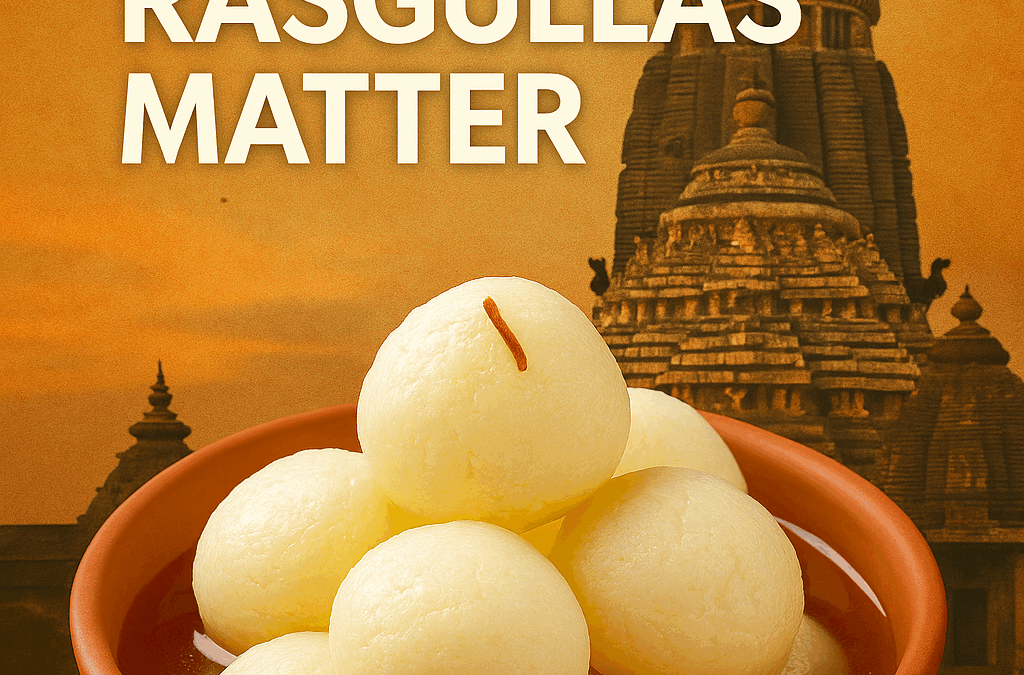
by Soniya Basu | Jun 27, 2025 | Festival & Events
Puri’s Rath Yatra is among the world’s grandest spiritual spectacles, but its final act—the Niladri Bije Rasgulla tradition—is a sweet ritual that many outside Odisha still don’t know. On this special day, syrup-soaked Rasgullas become more than just a dessert; they symbolise reconciliation, devotion, and divine love. This is the story of Niladri Bije, the day Lord Jagannath returns home, only to find his beloved Lakshmi Devi not quite ready to forgive him.
At the heart of this divine drama is the Niladri Bije Rasgulla tradition, where this humble sweet transforms from a simple delicacy into a symbol of divine apology and reunion.
🛕 What is Niladri Bije and Why the Rasgulla Tradition Matters?
Niladri Bije (ନୀଳାଦ୍ରି ବିଜେ) marks the final day of the Rath Yatra festival, when Lord Jagannath, after spending 9 days at the Gundicha Temple, returns to his main temple, Srimandir, in Puri. It falls on the Ashadha Trayodashi, which is the 13th day of the bright fortnight of the month of Ashadha (June–July).
But the Lord’s return isn’t welcomed with open doors.
According to the Skanda Purana and temple traditions, when Jagannath embarks on his annual journey with his siblings Balabhadra and Subhadra, he leaves behind Goddess Lakshmi, his consort.
In the humanized portrayal of divine relationships, this act is seen as a breach of marital duty. As any wife would, Lakshmi Devi is understandably upset. She feels ignored and left out.
So when Jagannath returns from his joyful journey, Lakshmi locks the gates of the sanctum sanctorum (Bhandaraghara Dwara) and refuses him entry.
The Rasgulla: A Sweet Offering of Reconciliation
To pacify his consort and regain entry, Lord Jagannath offers her Rasgullas – a beloved sweet in Odia tradition made from chhena (cheese curds) and soaked in sugar syrup.
This act of offering sweets to win over an angry partner has deep emotional and symbolic resonance. It’s not just food! It’s a gesture of humility, love, and reconciliation.
Moved by the Lord’s offering and remorse, Lakshmi finally relents and allows him back into the temple, marking the completion of the Rath Yatra.
The story finds mention in the Skanda Purana (Vaishnava Khanda), which details the rituals and legends surrounding Jagannath worship. While the modern offering of Rasgulla may not be named explicitly in the ancient texts, the narrative of Lakshmi’s anger and the need for appeasement is deeply rooted in the oral and ritual traditions of Puri.
Temple sevayats re-enact this moment each year, following Anka tradition, which has been preserved for centuries.
Odisha’s Legacy and the Niladri Bije Rasgulla Tradition
This ritual has also become central to the “Rasgulla origin debate” between Odisha and West Bengal. In 2019, Odisha received a Geographical Indication (GI) tag for the “Odisha Rasgulla”, affirming its historical link to Jagannath culture and the Niladri Bije ritual.
Every year, the state celebrates “Rasgulla Dibasa” (Rasgulla Day) on Niladri Bije to honour this sacred sweet.The Rasgulla tradition stands as a powerful reminder of Odisha’s contribution to Indian culinary heritage and religious storytelling.
Niladri Bije isn’t just a festival. It’s a spiritual metaphor.
- It teaches that even the divine must seek forgiveness when they wrong their loved ones.
- That gestures of love, however small or sweet, have the power to heal.
- And that relationships, divine or human, thrive on humility, empathy, and shared sweetness.
On this day, the Lord will return, Rasgulla in hand reminding us that sometimes, a sincere apology and a sweet offering can open even the most sacred of doors.
Want to explore more cultural traditions? Check out our celebration of iconic Indian dolls and their stories.
ScottishIndian.com celebrates the divine sweetness of Niladri Bije and the timeless cultural legacy of Lord Jagannath’s love story with Lakshmi.
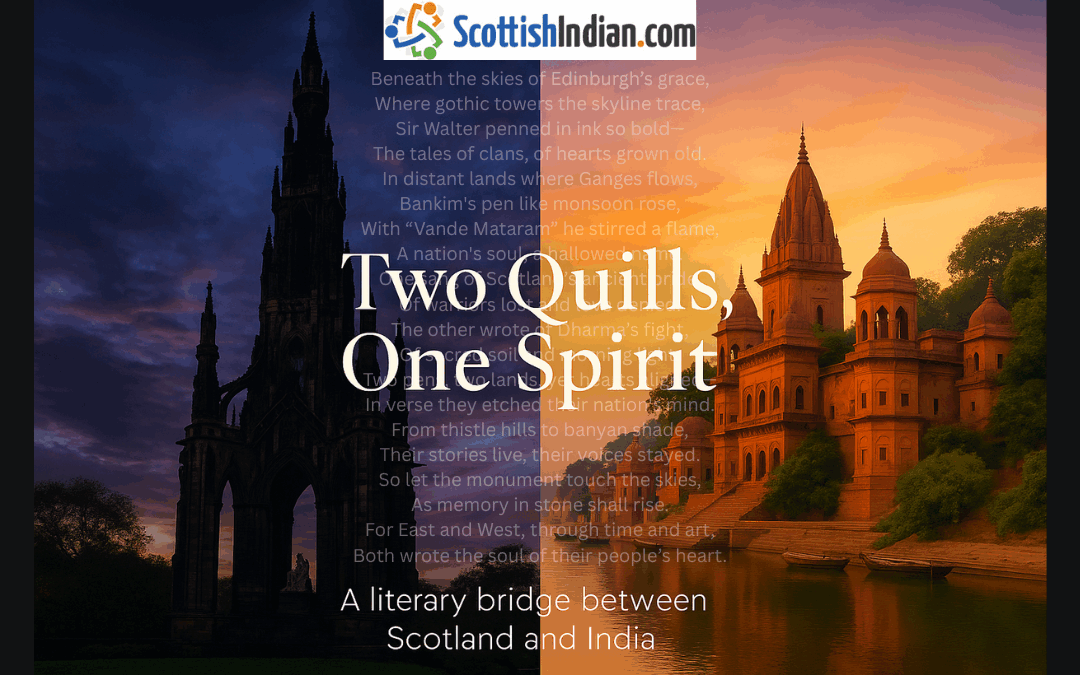
by Soniya Basu | Jun 2, 2025 | Cultural Integration, Culture & Community
Beneath the soaring spire of the Scott Monument in Edinburgh, one reflects on the enduring power of storytelling. Especially when considering the literary legacy of Sir Walter Scott and Bankim Chandra—two voices separated by continents but united in purpose.
🖋️ Two Quills Across Continents
Sir Walter Scott, immortalized in stone beneath the gothic arches, was more than a novelist. He was the voice of a nation, shaping Scotland’s soul through verse and fiction.
Thousands of miles away, in a land equally steeped in history and complexity, another quill was at work—Bankim Chandra Chattopadhyay.
Though they never met, and though they wrote in different languages and times, Scott and Bankim Chandra shared something powerful. They both believed literature could shape a nation. Their pens were swords. Their ink, a balm and a beacon.
For instance, Scott’s works, from Waverley to Ivanhoe, romanticized Scotland’s past. He brought Highlanders, heroes, and haunting landscapes to life. He built national pride not through manifestos but through stories. By blending folklore, myth, and memory, he gave Scotland a voice in an age of cultural suppression.
Similarly, Bankim Chandra—often called the father of the Indian novel—carried a torch for India’s identity. With Anandamath and the song “Vande Mataram,” he ignited Indian nationalism through fiction. His stories mixed history with spiritual and moral questions. He gave readers not just stories, but purpose and unity under colonial rule.
Their similarities are striking. Both drew inspiration from their land. Both used narrative to protect cultural identity. And both showed that words, when used with heart and conviction, can move people more than any speech or weapon.
The impact of Sir Walter Scott and Bankim Chandra goes beyond their era. Their words remain timeless.
As I stood before the Scott Monument, I thought of Bankim Chandra. I felt the invisible thread between them—a literary kinship that defied geography. Scott carved Scotland into legend. Bankim sang India into being.
In fact, their legacy lives beyond books and statues. It lives in the spirit of two nations shaped by stories and imagination.
✍️ Poetic Tribute: Two Quills, One Spirit
Beneath the skies of Edinburgh’s grace,
Where gothic towers the skyline trace,
Sir Walter penned in ink so bold—
The tales of clans, of hearts grown old.
In distant lands where Ganges flows,
Bankim’s pen like monsoon rose,
With “Vande Mataram” he stirred a flame,
A nation’s soul, a hallowed name.
One sang of Scotland’s ancient pride,
Of warriors lost and love denied.
The other wrote of Dharma’s fight,
Of sacred soil and morning light.
Two pens, two lands, yet hearts aligned—
In verse they etched their nation’s mind.
From thistle hills to banyan shade,
Their stories live, their voices stayed.
So let the monument touch the skies,
As memory in stone shall rise.
For East and West, through time and art,
Both wrote the soul of their people’s heart.
The stories of Sir Walter Scott and Bankim Chandra Chattopadhyay remind us that culture and imagination know no borders. At ScottishIndian.com, we celebrate the vibrant threads that connect Scotland and India—through art, literature, music, and everyday moments.
👉 Explore more cultural connections in our Blogs or join the conversation in our Whatsapp Community.

by Soniya Basu | May 30, 2025 | Cultural Integration, Culture & Community
On behalf of all Indian Immigrant in the UK
The Convenient Blame Game
In times of social anxiety and economic strain, immigrants are often the first to be blamed.
“You’re taking our jobs.”
“You’re changing our culture.”
“You don’t integrate.”
For Indian NRIs (Non-Resident Indians) in the UK, this rhetoric is familiar. But what’s rarely acknowledged is the irony behind it: those accusing us of cultural disruption come from a nation with centuries of history exporting its own culture—mostly forcefully—around the world.
From Colonisers to Critics: The Cultural Struggle of Indian Immigrants in the UK
Between the 17th and 20th centuries, Britain colonised nearly a quarter of the world’s land and people. It didn’t just extract resources but topped it with exported British laws, religion, education systems, and values to countries that never asked for them. 👉 Learn more: BBC Bitesize – British Rule in India
- Indian languages were replaced in schools by English.
- British Christianity was promoted at the expense of native faiths.
- Local governance and community systems were dismantled.
- Entire generations were taught to think in ways that favoured the coloniser’s worldview.
In short: British colonialism wasn’t cultural exchange. It was cultural domination.
And yet today, when Indian immigrants politely cook their food, wear their clothes, and speak their languages within their own communities, they’re told they’re “not integrating” or “changing the British way of life.”
Really?
Indian NRIs in the UK are not coming to impose. We are not missionaries. We are not rewriting your schoolbooks. We are not asking for Britain to change its identity.
We are doctors in your hospitals, educators in your schools, and researchers in your universities.
Our presence is felt not in disruption, but in contribution—often more than we receive. 👉 Explore: MEA – Indian NRI Global Contributions
We are contributing—often more than we receive. And yet, we face:
- Systemic discrimination in jobs and housing
- Underrepresentation in leadership positions
- Racism, both overt and subtle
- Visa insecurity, despite years of tax-paying contribution
- And worst of all, constant suspicion—as if we’re here to take something rather than give.
👉 Read more: India Today – Indian Diaspora and UK Politics
Indian NRIs in the UK vs. Colonial Memory: Who’s Reshaping Culture?
Is it the Indian family quietly celebrating Diwali with their neighbours?
Or the British Empire that rewrote entire cultures for centuries, from Bengal to Jamaica?
Is it the Indian software engineer coding British fintech products?
Or the colonial administrators who removed local governance systems and replaced them with laws that privileged the coloniser?
Let’s not pretend this is about “cultural preservation.”
It’s about control. And it’s about memory ,specifically, selective memory.
Specifically, the kind of memory that remembers only what flatters the mirror. A rich culture of remembrance, if only there had been one to begin with.
The truth is, India today is confident in its culture. Despite centuries of oppression, we have preserved our languages, our traditions, our values. And now, as India rises on the global stage, its diaspora reflects that same confidence. Thus, India’s cultural confidence is a victim to Britain’s cultural anxiety.
We don’t want to erase anyone else’s identity. We just want to exist with dignity.
Yet here in the UK, where identity is increasingly politicised, immigrants become easy targets for the things that have gone wrong. Whether that’s in the economy, public services, or social cohesion — which is a result of unplanned governance on theirs.
But here’s the uncomfortable truth: Indian NRIs are not breaking the system. We’re often the ones helping to keep it standing.
Why Indian Immigrants in the UK Deserve Respect, Not Rejection
British society often asks immigrants to “assimilate”—which is really just a polite way of saying, “Could you maybe not look so… immigrant?”
But look closely, and you’ll see: it’s not Indian culture that’s the threat. It’s the unwillingness of systems to include anything unfamiliar.
Wearing sarees and turbans is how we honour our roots—not a statement of separation.
Speaking Hindi or Tamil connects us to generations before us.
And when we celebrate our festivals, it’s to enrich the shared cultural fabric—not disrupt it.
This isn’t an invasion.
This is coexistence.
We don’t want domination, look back in history, we’ve seen what that looks like. We still live with its consequences back home. What we want is:
- Respect for our contribution
- Fair opportunity
- Space to be ourselves without suspicion
- And a recognition that integration is a two-way street
We are not asking Britain to apologise for the past—but we do ask that it not repeat it in modern form.
If Indian immigrants seem protective of their culture, perhaps it’s because we’ve seen what happens when it’s taken away.
If we seem quiet in the face of injustice, perhaps it’s because we’ve learned to endure.
But don’t mistake that silence for consent.
And don’t mistake our presence for imposition.
We didn’t colonise anyone.
We didn’t rewrite history.
About the Author
An Indian immigrant in the UK who believes in cultural coexistence, historical clarity, and building bridges without losing roots. A firm believer that progress doesn’t require erasure but only requires respect.
👉 “For more real stories and cultural perspectives, visit our Community Blog or sign up for our newsletter.”
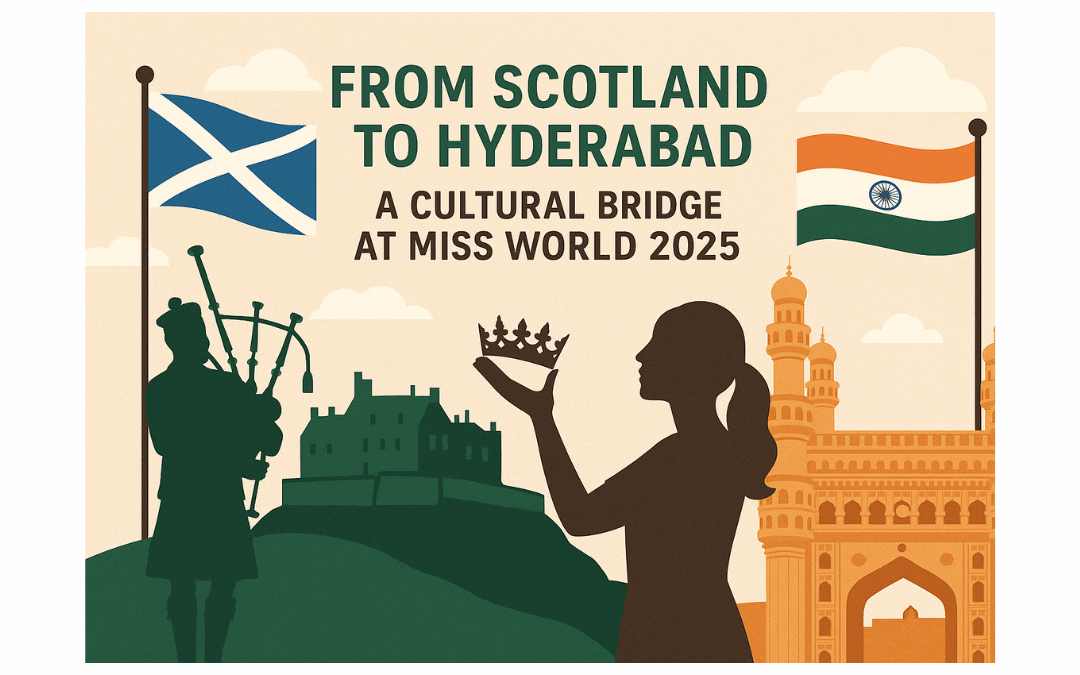
by Soniya Basu | May 27, 2025 | Cultural Integration, Culture & Community
Miss Scotland Miss World 2025 Hyderabad is more than a beauty pageant headline — it’s a celebration of heritage, strength, and identity. As the world watches the 72nd Miss World unfold in Hyderabad, India, Miss Scotland brings with her more than just elegance. She represents a legacy of strong women, Scottish heritage, and the spirit of cross-cultural exchange that resonates deeply with the ScottishIndian community.
One of Amy’s most meaningful moments took place at the Telangana Police Headquarters. Contestants were welcomed by a live pipe band — playing the Scottish national instrument, the bagpipes.
This was more than just a performance. It was a proud moment. Amy said, “Seeing the band in the tartan and hearing the music made me feel so proud of my heritage.”
Scottish culture was honored far from home — and right in the heart of India.
A Shared Legacy: Women in Policing from Scotland to Hyderabad
This visit held special meaning for Amy. Her family has served in policing for three generations. Her mother became one of the first female officers in Scotland to return to work after having a baby. This was rare and discouraged at the time.
Her mum rose to the rank of Assistant Chief Constable — while raising five children. Amy shared how proud she is of her mother’s journey. She also praised the Telangana Police for their strong focus on women’s safety.
From women-only transport to dedicated helplines, their work stood out. Amy found it inspiring to see so many female officers leading change.
A Warm Welcome in Hyderabad
After the police visit, the contestants were hosted at the Telangana Secretariat. They enjoyed a beautiful ceremony and high tea. A stunning drone show followed, telling the story of Telangana’s history and culture.
Amy called the experience “unbelievable” and said she felt deeply welcomed throughout the visit.
Scottish Heritage Meets Global Stage at Miss World 2025
During the Top Model Final, Amy wore a gown she designed herself. It was made from 100% Scottish wool, in a bold green tartan. The fabric was gifted by @glenislakilts.
Her look paid tribute to the Scottish Lowlands. It was more than fashion — it was a proud statement. She brought her heritage to the world stage, beautifully blending tradition with modern elegance.
Amy Scott’s presence at Miss Scotland Miss World 2025 Hyderabad is more than symbolic. She’s telling a story of strength, identity, and legacy — one that resonates far beyond the stage. And she’s doing it in India, a country with deep meaning for the ScottishIndian community.
We’re proud to follow her journey — from Strathaven to Hyderabad.
Stay with ScottishIndian.com for more stories that celebrate identity, beauty, and cross-cultural pride.
👉 Learn more about who we are.
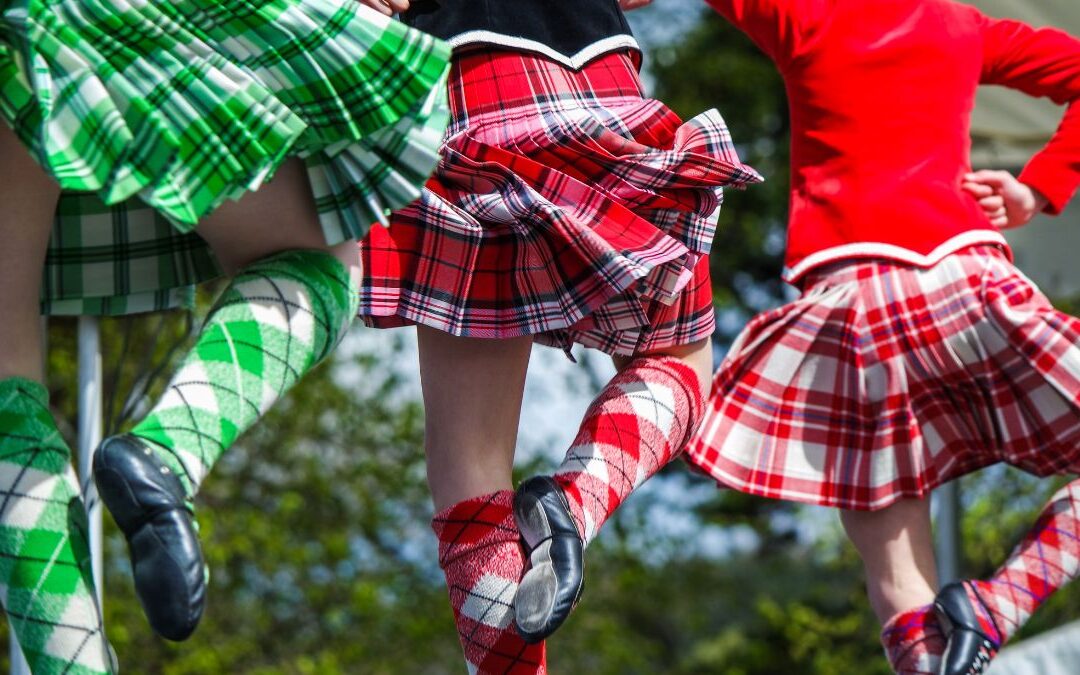
by Soniya Basu | May 23, 2025 | Culture & Community, Festival & Events
So, are you free on 29th May, thursday?
Did you know there’s a traditional Scottish ceilidh dance with a live band happening every single month in Edinburgh — and it’s open to everyone? Whether you’re a local or a visitor, this is the kind of feel-good night you’ll want to add to your calendar.
📍 Where’s It Happening?
Tucked inside the stylish Bonnie & Wild Scottish Marketplace in St James Quarter, this lively event brings Scotland’s folk traditions right into the modern heart of the city. It’s not just dinner and drinks here — it’s dancing, community, and heritage coming alive under one roof.
🎻 What’s a Ceilidh Dancing Anyway?
A ceilidh (pronounced kay-lee) is a traditional Scottish social gathering that revolves around live folk music, easy-to-follow dances, and a whole lot of fun. No dance experience required — just bring your energy! Expect spinning, laughing, and making new friends along the way.
The place is as authentic as it gets — violins, accordions, and the full Celtic vibe.
💃 Who’s It For?
Everyone. Seriously. Students, tourists, couples, solo adventurers — even families! The vibe is super welcoming, and you’ll often find a mix of locals and curious visitors jumping into the action.
And yes — we spotted a bunch of desi students and young professionals at the last ceilidh, totally owning the dance floor with the biggest smiles.
🎟️ What You Need to Know about Ceilidh Dancing
- When: Once a month, typically on a Thursday evening
- Where: Bonnie & Wild, St James Quarter, Edinburgh
- Entry: Often free or very affordable
- Dress code: Casual, comfy shoes recommended for dancing!
- Pro tip: Arrive early to grab a bite from one of the amazing Scottish food stalls inside
🧡 Why You Should Go
- It’s the most joyful way to tap into Scottish culture
- Great way to meet people if you’re new in town
- It’s indoors — so rain or shine, the ceilidh goes on!
- Instagram-worthy moments guaranteed 📸
🌐 Want More?
Keep an eye on @bonnieandwildmarket for dates and details. And if you’re looking for more desi-friendly events, weekend plans, and culture hacks in Scotland, check out ScottishIndian.com — your go-to guide to thriving in the UK.
Whether you’re a first-timer or a ceilidh pro, this event is your perfect midweek pick-me-up. Come for the music, stay for the memories — and maybe pick up a few dance moves along the way.
See you on the dance floor! 💃🕺
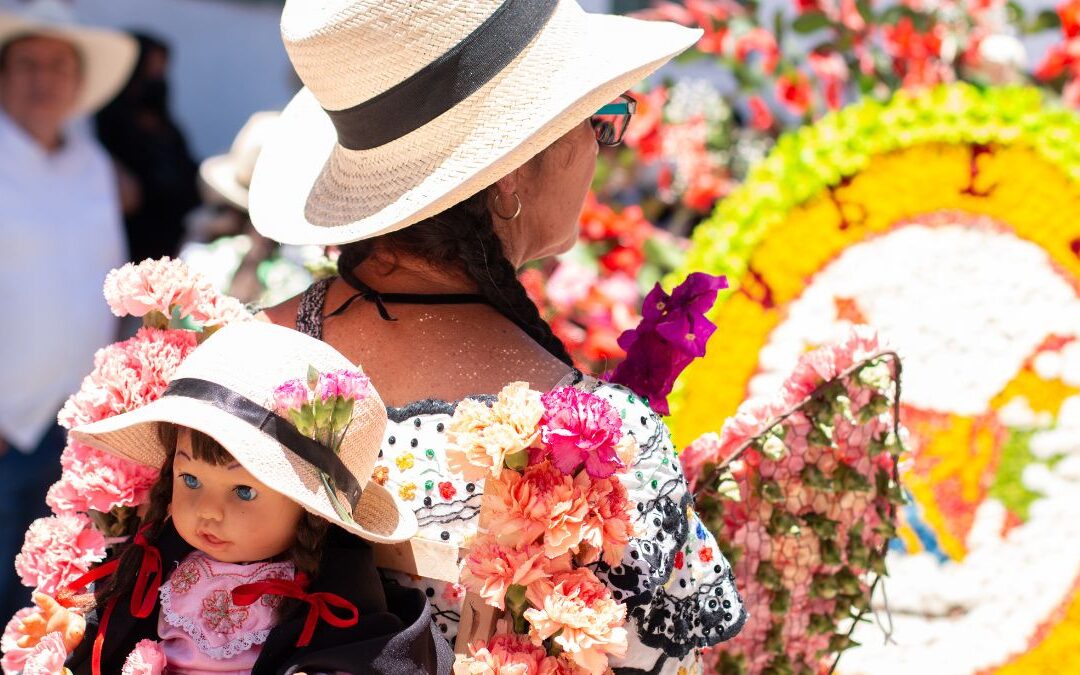
by Soniya Basu | May 22, 2025 | Culture & Community, Festival & Events
Where art meets flowers, and the city transforms into a blooming wonderland | ScottishIndian.com
If you’re looking for a uniquely magical experience in London that’s completely free, visually stunning, and perfect for content creation — you’ll want to explore Chelsea in Bloom. This spectacular annual floral art show transforms the stylish streets of Chelsea into a dreamscape of flower-covered sculptures, creative displays, and living installations.
For Indian students and families in the UK, especially those seeking offbeat things to do in London beyond the usual sightseeing, this is one of the most aesthetic and enjoyable events of the year.
🌷 What Is Chelsea in Bloom?
Chelsea in Bloom is an award-winning alternative floral art show that takes place every May, running alongside the world-famous RHS Chelsea Flower Show. But unlike the ticketed RHS show, Chelsea in Bloom is completely free and open to everyone.
During the festival, shops, cafés, restaurants, and streets across Chelsea are decorated with extraordinary floral creations based on a central theme. Previous years have seen jungle adventures, enchanted gardens, fairy tales, and fashion-inspired exhibits.
In 2025, one of the standout installations includes a surreal, multi-faced mannequin adorned with pastel blooms and a cascading pink floral gown — perfectly blending art, fantasy, and floral design. The attention to detail is jaw-dropping, and every corner is a selfie-worthy moment.
💡 ScottishIndian Tip: The festival is super photogenic — whether you’re a photography enthusiast, a content creator, or just looking to refresh your IG grid, this event is pure gold.
🌼 Why It’s a Must-Visit for Indian Visitors in the UK
- It’s Free!
Unlike many major London events, Chelsea in Bloom doesn’t require a ticket. Simply walk, explore, and enjoy.
- Perfect for Families and Students
You don’t need a full day or strict itinerary. It’s ideal for a short weekend stroll or a midweek pick-me-up.
- A Cultural Mashup
The floral displays often feature global influences — Indian motifs, peacocks, rangoli-inspired shapes — all woven into European floral art traditions.
- Local Shops Join In
Many participating stores offer floral-themed menus, discounts, and interactive art, making it more than just a visual treat.
- Great Weather = Great Mood
May in London usually brings mild sunshine, ideal for outdoor events without heavy coats or umbrellas (hopefully!).
📍 How to Get There
- 📍 Location: Chelsea, London (around Sloane Square & King’s Road)
- 🚇 Nearest Tube Station: Sloane Square (District & Circle Line)
- 📅 When: Mid-to-late May every year
- 💸 Cost: FREE!
🔗 For maps, walking trails, and official event dates, visit: https://chelseainbloom.co.uk
💬 Final Thoughts from ScottishIndian.com
Whether you’re a desi student exploring London, a parent planning a peaceful day out, or just love art and nature, Chelsea in Bloom is the perfect event to experience something both relaxing and awe-inspiring.
At ScottishIndian.com, we celebrate everything from cultural festivals to secret gardens and desi-friendly days out — and Chelsea in Bloom fits right in. 🌼📸
📩 Want more free festivals, offbeat city walks, and photo spots in the UK?
Check out our Culture section or follow us on Instagram @scottishindiancom.





